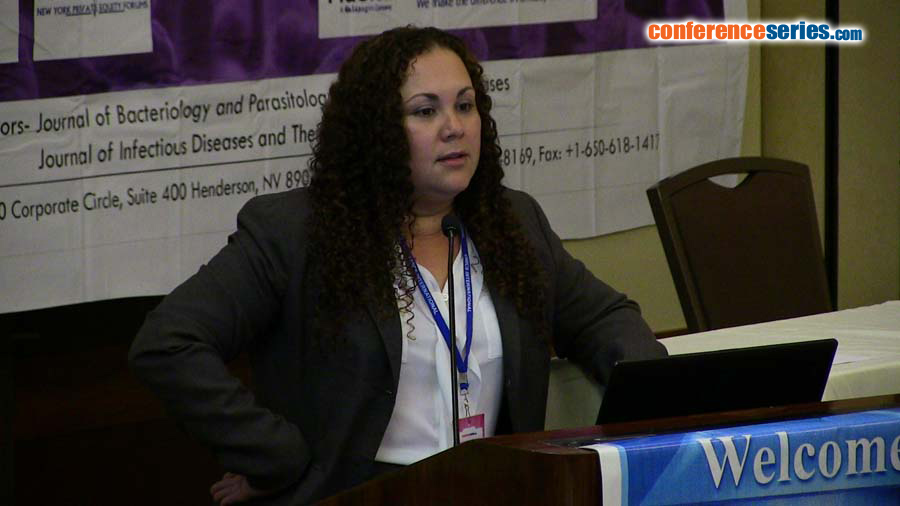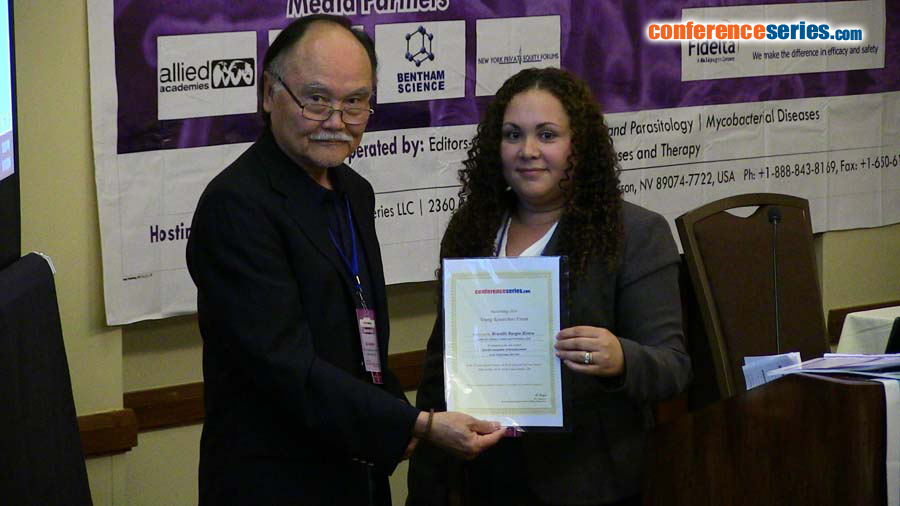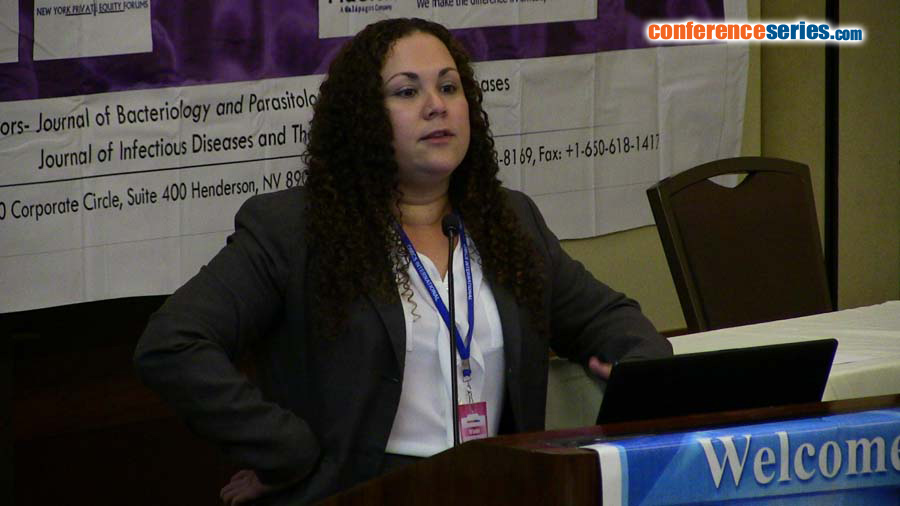
BrunilÃs Burgos-Rivera
Center for Disease Control and Prevention, USA
Title: Macrolide susceptibility of Bordetella pertussis in the United States, 2011-2015
Biography
Biography: BrunilÃs Burgos-Rivera
Abstract
Although rare, macrolide resistance in Bordetella pertussis has been reported in some countries more frequently since 2012. We evaluated current U.S. B. pertussis isolates for susceptibility to erythromycin and azithromycin and optimized a PCR assay for testing erythromycin resistance directly on nasopharyngeal specimens (NPS). 1208 B. pertussis isolates collected 2011-2015 from 7 states with enhanced pertussis surveillance, 2 states with large pertussis outbreaks, and 6 states with sporadic cases were tested for susceptibility to erythromycin and azithromycin by disk diffusion. Plates were incubated for 7 days to check for the heterogeneous resistance phenotype. In addition, 54 DNA NPS extracts from 6 states were tested by a PCR targeting the V domain of the 23S rRNA gene, which harbors the A2047G mutation conferring macrolide resistance. PCR primers were designed using the Chinese B. pertussis vaccine strain as a reference. Two PCR reactions were performed for each DNA extract allowing for the identification of susceptibility patterns by gel electrophoresis. All isolates were susceptible to both macrolides, with zones of inhibition of at least 45 mm after 3 days. No isolates produced the heterogeneous phenotype after 7 days. Out of the 54 DNA extracts tested, 48 were erythromycin susceptible by PCR. Six DNA extracts yielded no PCR products, attributed to DNA degradation or poor specimen quality. No DNA extracts harbored the mutation that confers macrolide resistance. Although macrolide resistance in B. pertussis does not appear to be a current problem in the U. S., systematic monitoring is crucial. Testing NPS by PCR will allow us to quickly identify resistant cases whether or not an isolate is available.




